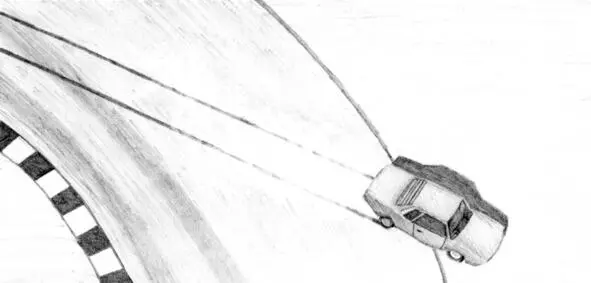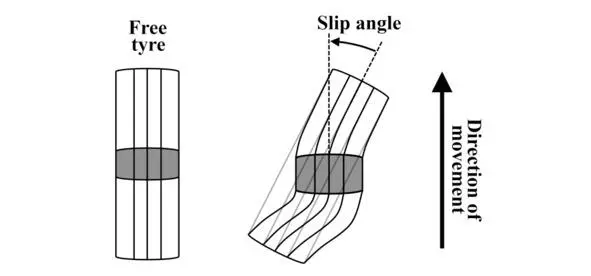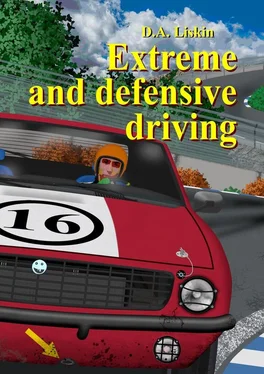Extreme and defensive driving
Dmitry Aleksandrovich Liskin
© Dmitry Aleksandrovich Liskin, 2021
ISBN 978-5-0053-7232-1
Created with Ridero smart publishing system
Extreme and defensive driving – are strongly coupled driving styles, covering body of knowledge about cars, its components and parts and how it works, driving experience and skills. Extreme driving means driving a car at its limit of potential and learning basics sports elements (high-speed cornering, drifting, braking methods, study of special terminology and so on) to achieve a minimum lap time. Defensive driving is focused on preventing crashes related to a partial loss of control over car (for example, when the front wheels lose grip with the road in a corner).
Control a racing car is a mastery that takes years to master. Handling a sport car by a professional racer is comparable to virtuoso playing of a musician on the guitar or piano. You ask: “Why do we need extreme and defensive driving skills, when we are either driving calmly in a straight line or standing in a city traffic jam?” The answer is simple: no one is immune to accidents on the road that can occur no matter what your driving style is. If a driver does not have the necessary skills, defensive driving techniques are not worked out and are not brought to automatism – the driver can count on luck only.
Content of the book is divided into two parts: “defensive driving” and “extreme driving”. The material is built by an education course and is not difficult to master by a person, who has basic skills of driving car and is familiar with how it works. The content includes:
• tests results, their analysis and generalization;
• descriptions of operation of car components, that affect behavior of car and control techniques;
• the techniques and methods of extreme and defensive driving;
• requirements for successful completion of the driving techniques;
• description of the driving techniques in circuit racing;
• a set of exercises for self-training of drivers and racers.
The book is not a collection of postulates and canons, but is a help in mastering driving skills. The author is not responsible for road traffic accidents, related to a lack of understanding of operation of car components, the driving techniques and their incorrect doing, with inappropriate technical characteristics of cars and accidents caused by non-compliance with precautions when performing the exercises. All techniques should be performed after preliminary tests on the car and careful training of the driver. The responsibility for driving lies entirely with the driver.
First part of the book is independent and is mainly aimed at mastering of defensive techniques. To bring the techniques to automatism, at the ends of the chapters exercises and tests are offered that simulate situations that may arise on the road. In the text of the first part of the book there are practical parts “test” for testing car and the defensive techniques and “requirements” for successful completion of the defensive techniques. Driving techniques are shown in the form of flowcharts and marked with the letter M.
The phenomenon when car not answers steering wheel turns, moves along straight trajectory (or trajectory begins to straighten) due to loss of grip of the front wheels on the road, is called understeer. Car shows understeer (low steerability), when the front wheels slide on the road.
The figure shows, how we entered a corner at a fairly high speed and pressed the brake pedal to the stop, which caused the front wheels to lock and, as a result, front wheels sliding.

Consider what happens with a contact patch of the front tyres to the road when understeer due to heavy braking.

The figure schematically shows deformation of a tyre during front wheels sliding, when the front wheels are turned by the steering wheel at a large angle. Contact patch is marked gray. When braking, load on the front axle increases, so contact patch also increases. When understeer, the tyre deforming, contact patch rotates to direction of movement, and so-called tyre slip occurs. Tyre slip is angle of twisting of contact patch relative to direction of movement of the wheel. Steerability factor is defined as ratio of rear wheels contact patch to front wheels contact patch. If front tyres deformation exceeds rear tyres deformation, steerability factor is less than one. In this case, they say understeer or low steerability.
Sliding of the front axle is reflected in feedback of the steering wheel. If at entry to a corner, the steering wheel turned with some effort, and after car stopped obeying the steering wheel and the steering wheel began to rotate more easily, then sliding of the front wheels began. After the front wheels regain traction, feedback of the steering wheel is also restored.
Sliding of the front wheels is a cause of accidents. Let us list causes of understeer, which are related to driver errors:
• too high speed or large angle of turn of the front wheels on entry to corner;
• excessive braking during cornering (including wheels lock).
Common mistake: a driver over speeds at entry to a corner and, fearing that trajectory would not fit into borders of the corner, turned the steering wheel deeper into the corner and pressed the brake pedal. If the front wheels are turned too much, they slide on the road. After pressing the brake pedal, the front wheels lock. In the end, trajectory becomes straight, car go out of the corner or collides with a barrier.
When entering a corner at high speed you may feel that trajectory will not able be laid within the corner. When it seems that we do not fit into a corner – it is important not to lose your composure. In no case you should sharply hit the brakes and continue to turn the steering wheel in direction of the corner, as these actions will only worsen the situation, there will be sliding of the front wheels. It is necessary to depress the throttle pedal and start to slow down smoothly in the corner. Let us consider examples of trajectories of passing through a corner.

1 – is “ideal” trajectory of sports style cornering, 2 – entrance to the corner was a high speed, 3 – speed on the corner entry was so high that no chance to avoid way out of the corner.
While driving along trajectory 2, speed of car gradually decreased with help of soft braking. Note that radius of trajectory 2 gradually decreases, as with smooth braking speed of car gradually decreases. It can also be seen that when driving along trajectory 2, car moves along outer edge of the road, unlike trajectory 1. If the front wheels began to slide, trajectory 2 would straighten out and not fit into the corner. If at entry to a corner it is found that initial radius of trajectory is too large, this does not means that it will not be possible to lay trajectory within the corner.
What can be methods of dealing with front wheels sliding, if it still occurred?
1. If sliding is caused by braking, the first step is to depress the brake pedal. This should put control back in our hands.
Читать дальше















